Connected TV Ad Spend—Up Another $24B in 2023

There’s no doubt CTV advertising has been on a growth trajectory.
The shift from linear to CTV is driving the growth of connected TV ad spend at the expense of linear (most ad buyers are funding CTV spending by diverting from linear TV ad budgets).
But will that upward momentum continue, and what variables will be in play?
We poured through the research to uncover:
Projected connected TV ad spend for 2023
CTV ad spend by channel
CTV growth drivers
And CTV ad spending by industry
2023 connected TV ad spend will be up another ~27%
The size of connected TV (CTV) ad spending in the U.S. is projected to grow to about $24B in 2023 ($23.9B according to Statista, and $24.2 according to eMarketer). That represents a 26.5% to 26.7% increase over 2022.
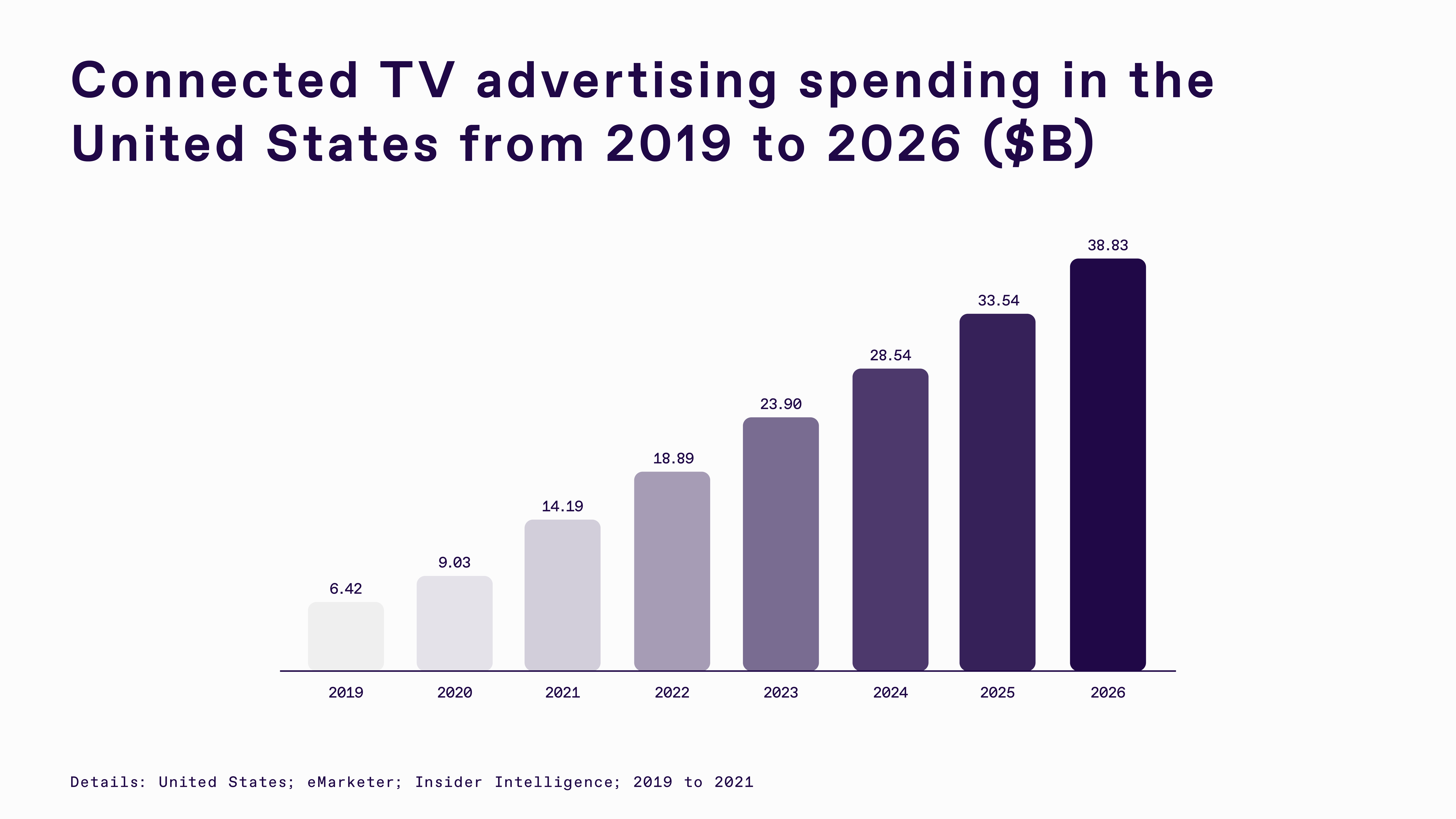
While that year-over-year growth rate is expected to slow a bit as we head into 2024 (21.9%), CTV ad spend will continue to grab a higher and higher percentage of total media ad spending.
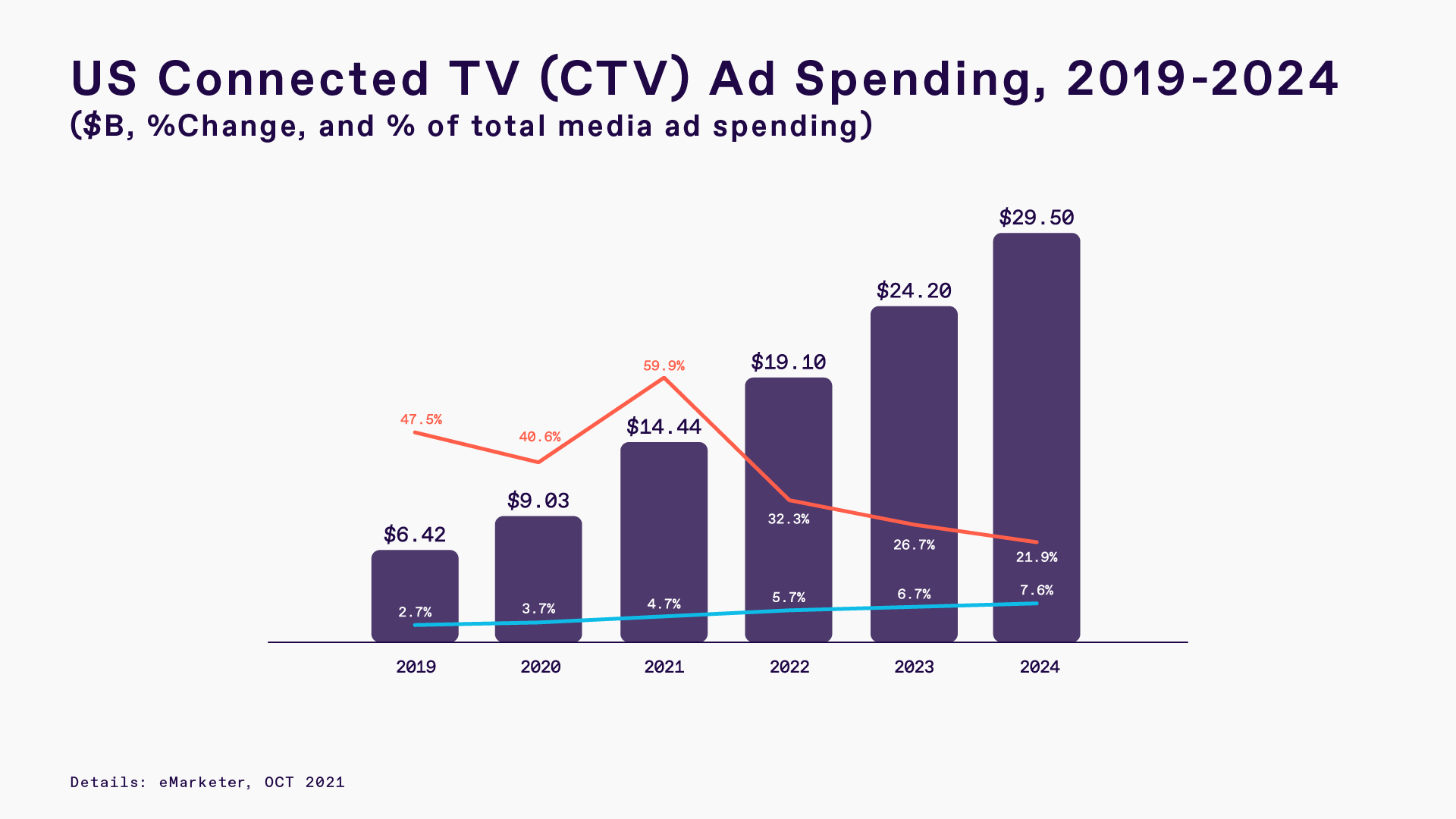
Where are advertisers spending their CTV ad dollars?
The projected video ad spend breakdown by company in 2023 ranks Hulu as the single highest platform for connected TV ad spend ($4.82 billion), followed by YouTube ($3.83 billion), Roku ($3.08 billion), Pluto ($1.64 billion), and Tubi ($1.26 billion). Other companies' collective CTV ad revenue is estimated to reach$9.58 billion in 2023.
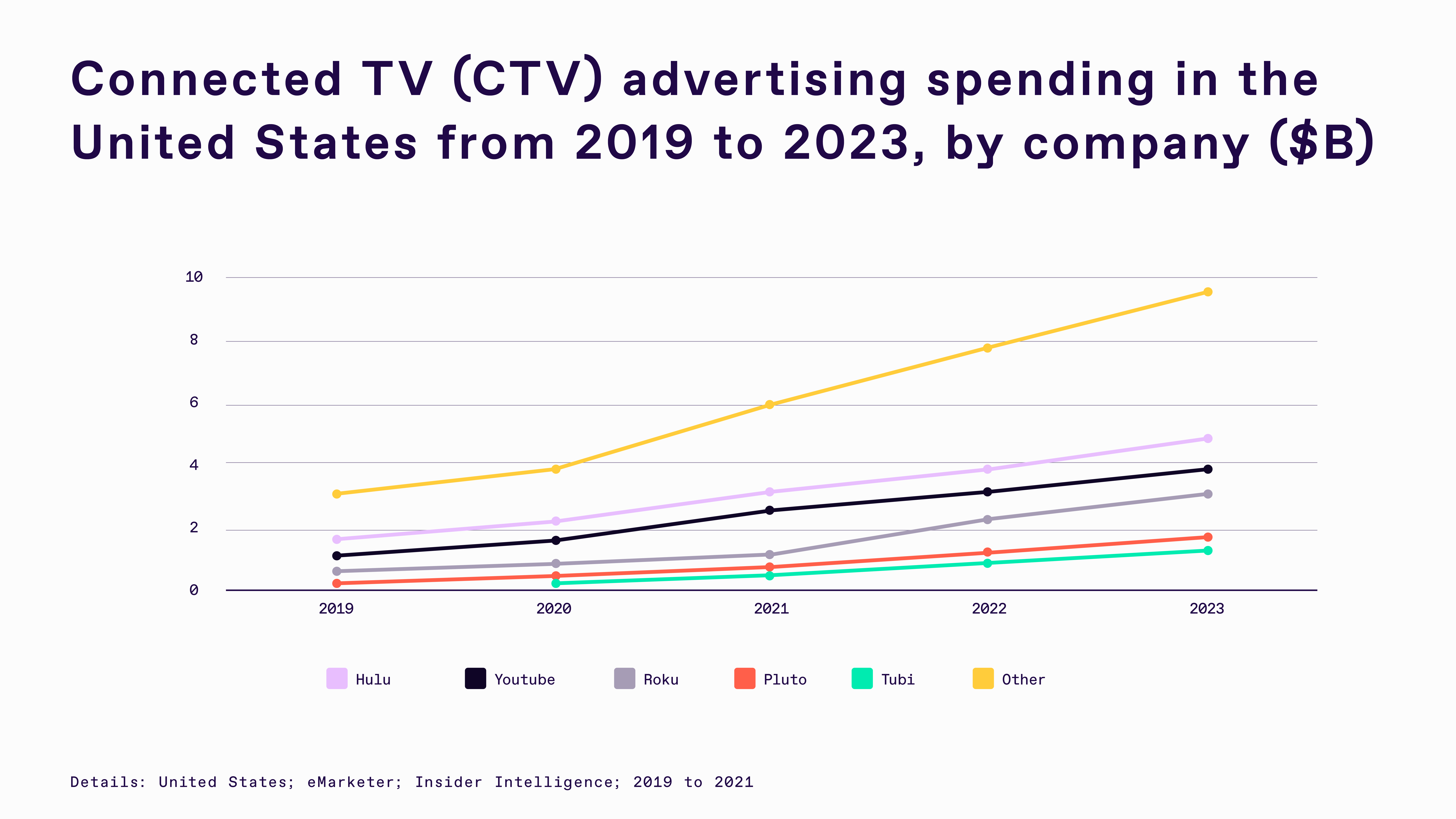
Of course, Netflix and Disney+ have recently added ad-supported tiers to their streaming services, which may shake up the mix. Netflix is expected to generate $150M in advertising in 2023 via their new ad-supported tiers, and Disney+ is projected to generate $596M in ad revenue.
And given YouTube’s latest deal securing streaming rights to the NFL’s Sunday Ticket, the platform may end up pulling in a lot more than projected. The deal will allow YouTube viewers to stream nearly all of the NFL games on Sunday next season, which could be .
What’s driving growth in CTV ad spend?
There are two primary growth factors driving continued growth in CTV ad spend (and neither is too surprising):
Increasing ownership of smart TVs
One report noted that "the primary reason for all of the growth we expect in Connected TV+ advertising is that these environments are simply where a large and growing share of viewing is shifting." Millennials and Gen Z are driving this shift away from linear TV consumption, with consumers under 35 years consuming25% less linear TV than older consumers.
As a result, linear TV viewership in the US is expected to decline another 5.8% in 2023.
Considering the continued decline of traditional TV viewership, it makes sense that about 73% of advertisers plan to fund their CTV ads by diverting their linear TV advertising budgets.
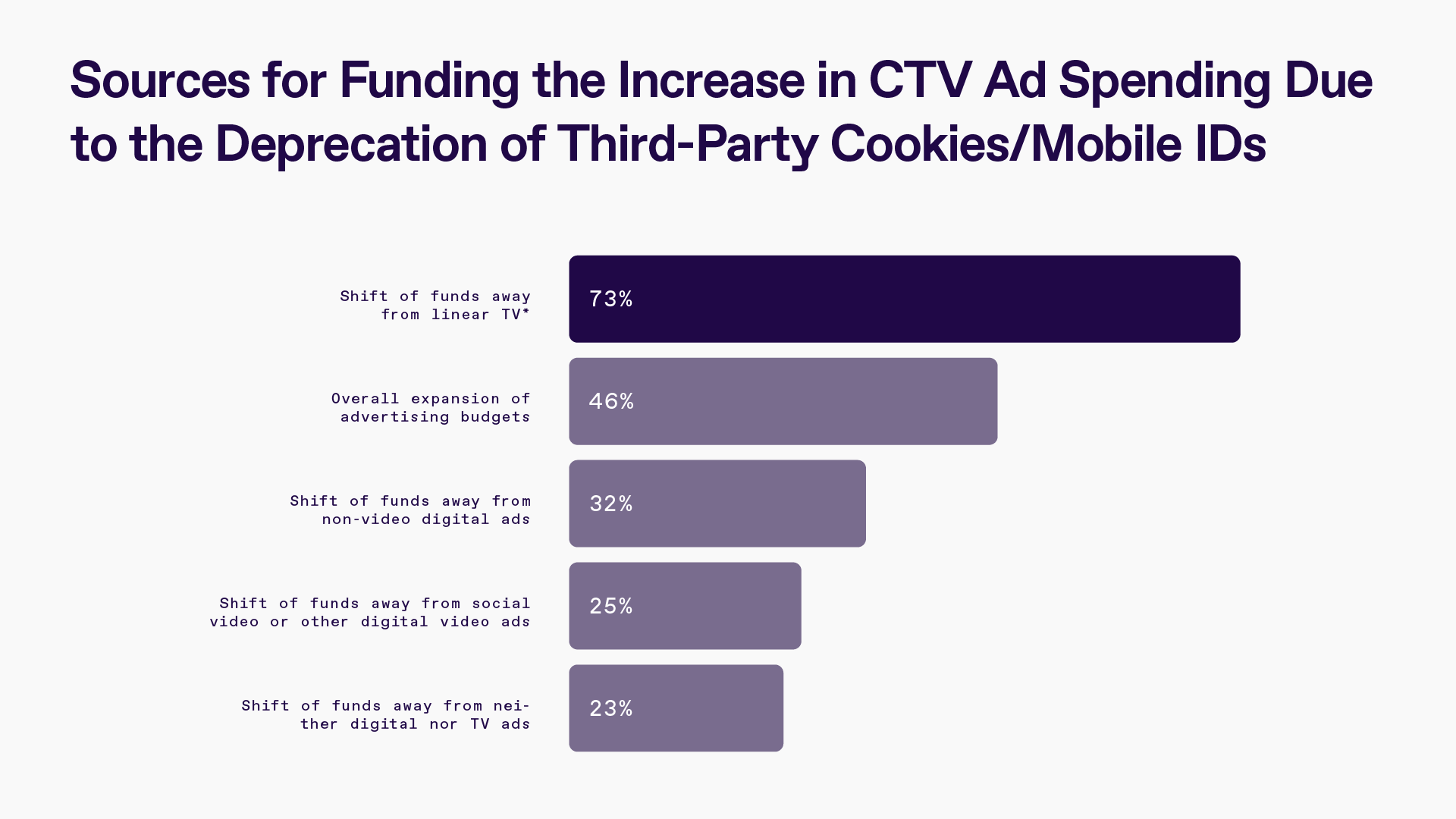
The increasing ownership of smart/connected TVs is also driving growth in CTV ad spend—smart TVs currently represent thefastest-growing segment of streaming devices with 48% year-over-year growth.
Survey data also indicates that smart TV ownership in the US has increased by 8% in the past two years to74% in 2022, with 79% of wifi-enabled households using CTV devices to stream an average of122 hours of streaming video content monthly.
Advertisers largely welcome the transition to programmatic TV, as the technology allows them to run highly-targeted, data-driven, and measurable campaigns.
CTV ad spend by industry vertical
Unfortunately, there’s not much data available to predict 2023 connected TV ad spend by industry. But if the most recent TV trends hold steady, viewers will be watching the most ads from travel, apparel, and wellness brands. These three categories saw the highest digital video/CTV ad spend growth from 2020 to 2021 (last full years available).
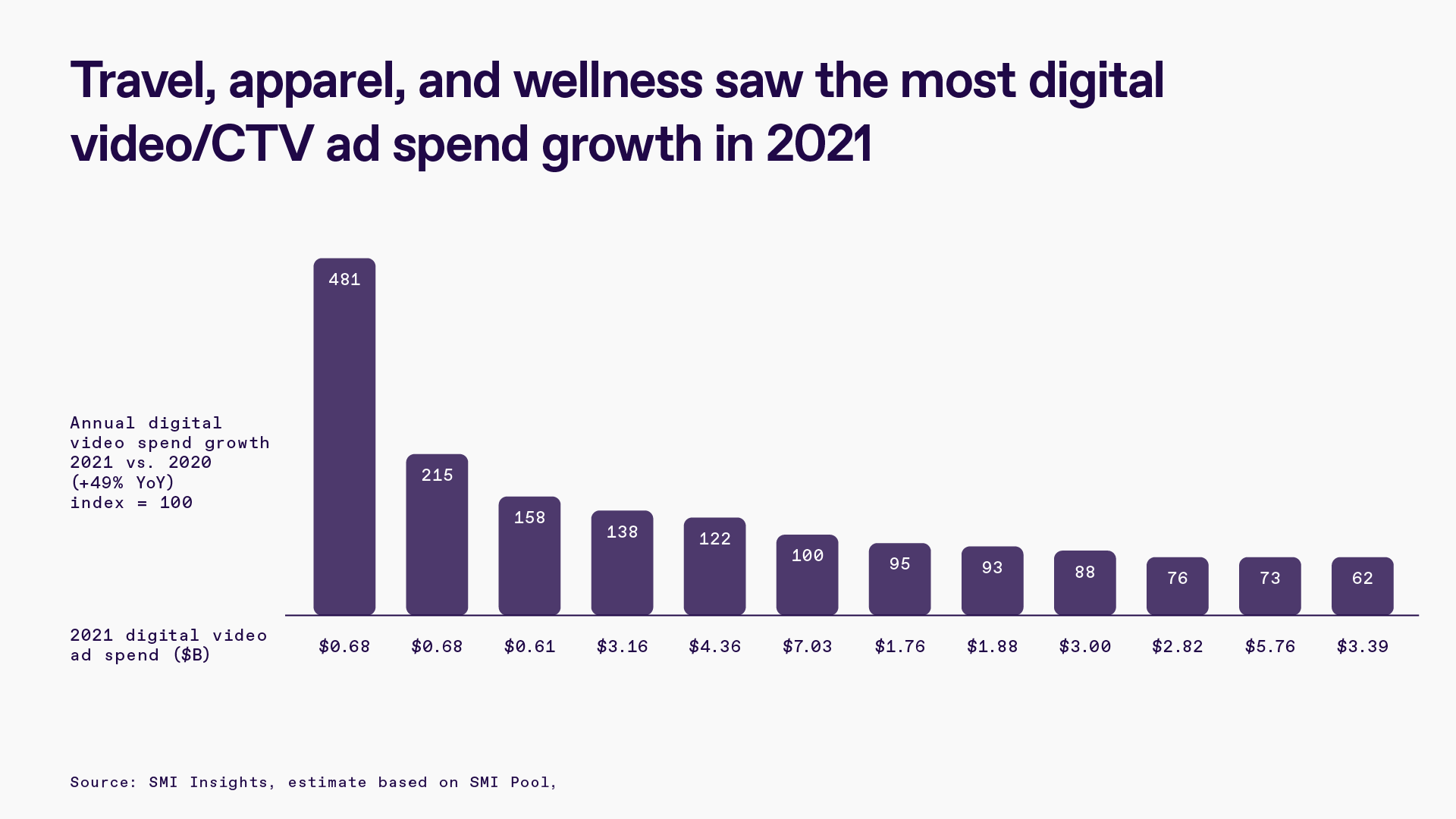
Categories reviewed by IAB don’t include political ad spending, though. According to a recent report, "political advertisers [in the US] increased their spending on CTV devices by 1500% in the first half of 2022 compared with the same period in 2020."
Overall, political advertisers spent a total of $1.44 billion on CTV ads in the 2022 midterms — and we can expect political campaigns to increasingly lean on CTV advertising in the future.
Related content:Why the future of political advertising is CTV
Make the most of CTV growth
While more and more households are cutting the cord (or not connecting it in the first place), most TV viewers are actually still considered “hybrid” viewers. This means they’re watching a combination of linear and streaming TV.
You can help your buyers by encouraging them to think about how linear and CTV can work in tandem, gradually transitioning linear dollars to connected TV ad spend.
Linear should sit at the top of the funnel to provide massive reach. CTV also helps with broad reach, but the granular digital-like qualities also provide the ability to drive and measure real ROI and business outcomes.
Learn more about making the transition:Connected TV vs. Linear TV—and why they belong together



